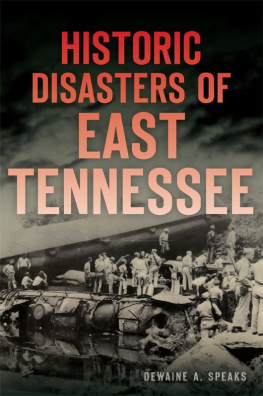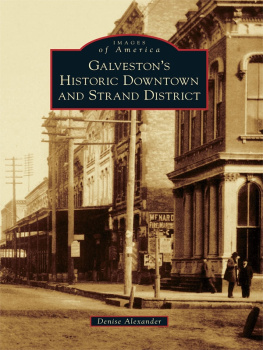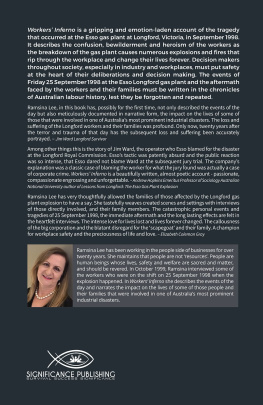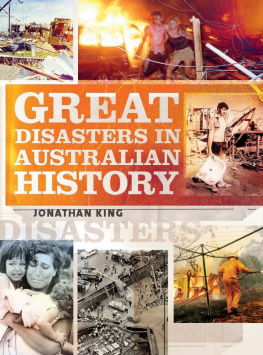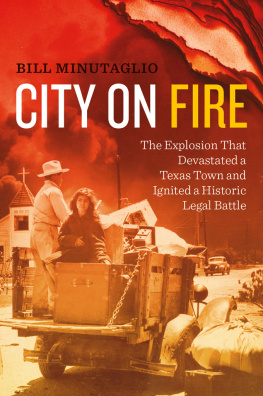


Published by The History Press
Charleston, SC
www.historypress.com
Copyright 2019 by Dewaine A. Speaks
All rights reserved
First published 2019
e-book edition 2019
ISBN 978.1.43966.762.0
print edition ISBN 978.1.46714.189.5
Library of Congress Control Number: 2019939727
Notice: The information in this book is true and complete to the best of our knowledge. It is offered without guarantee on the part of the author or The History Press. The author and The History Press disclaim all liability in connection with the use of this book.
All rights reserved. No part of this book may be reproduced or transmitted in any form whatsoever without prior written permission from the publisher except in the case of brief quotations embodied in critical articles and reviews.
I am honored to dedicate this work to the memory of my wonderful parents, Clyde and Geneva Speaks.
CONTENTS
FOREWORD
I first met Dewaine Speaks when I joined a senior golf group of which he was a member. As our friendship developed, I discovered that in addition to the love of golf, he and I share a mutual passion for baseball and history. As a result, Dewaine graciously shared with me two of his previous books, Weston Fulton Changed the World and East Tennessee in World War II. After reading his highly compelling tomes, I was able to experience Dewaines tremendous love of and respect for Tennessee in general and its people in particular. As a nonnative southerner (I hail from Wisconsin), Dewaines work greatly increased my knowledge of the great state of Tennessee and its rich history, and for this, I am most grateful.
As an excellent researcher, Dewaines books are filled with exceptionally rich, detailed content, and his latest work, Historic Disasters of East Tennessee, is no exception. For me, of particular poignancy is the chapter describing the Southern Railways tragic accident that occurred on October 23, 1965, that took the lives of the University of Tennessees assistant football coaches Bill Majors, Charlie Rash and Bob Jonesan event that resonates to the present day with East Tennesseans.
For me, the highlight of his latest book is not necessarily the recounting of the heart-rending disasters that occurred in East Tennessee but rather their direct impact on its people and how they selflessly responded with an unparalleled degree of kindness and zeal. Indeed, Dewaine Speaks captures the very essence of East Tennessees Volunteer spirit, which is clearly documented in the authors detailed, factual descriptions of how these kind souls responded to the victims of the disasters, opening up their hearts and homes and embracing them with love and kindness that exemplifies the very essence of East Tennesseans.
Stephen G. Wiley
For the better part of fifty years Dewaine Speaks, a close lifelong friend of my father, has entertained me by recounting numerous stories of the past. Whether the story involved his personal days playing high school or college baseball or that of a local companys impact on history, his knowledge and knack for recalling an amazing level of detail, coupled with a down-home storytelling style, have always captured my imagination. To the benefit of readers, these same storytelling elements are clearly present in his books.
With Dewaines latest book, Historic Disasters of East Tennessee, he once again identifies a subject matter that will interest residents of East Tennessee as well as non-locals alike and brings the subject matter to life in the form of short stories, which even readers with a limited attention span like I have can thoroughly enjoy.
In Historic Disasters of East Tennessee, we learn about tragic events that, while many times were devastating to communities, more often than not also brought communities closer together and made them what they are today. Although each story represents a specific event, the books overarching theme reflects long-forgotten historical events that collectively shaped these East Tennessee communities and made them each so unique. Living in a small community myself, Ive always been interested in historical events that shaped my community, but I have never exerted the effort required to research it. Luckily, there is a person like Dewaine to do the hard work for us and present the information in a style that everyone will enjoy.
In a few instances, the magnitude of the disastrous events covered in this book may have been physically memorialized in some fashion, such as with a stone monument located in Rockwood, Tennessee, honoring Boy Scout troop members who tragically died in a nighttime flash flood of their campsite. Historic Disasters of East Tennessee goes a step further and captures and memorializes the actual human experience of the events. As an example, many details of each event, such as the 1904 head-on collision between two trains in New Market, Tennessee, come from the viewpoint of first responders, survivors or family and friends of the deceased.
Im so grateful that Dewaine has once again found a way to share his love of history and storytelling with a larger audience.
Michael Samples
ACKNOWLEDGEMENTS
The following individuals and entities have made important and very much appreciated contributions to this work:
Jack E. Webb
Ruth Ellen Baldwin
Jerry Kerr
Dr. William Peck
Michael Samples
Mildred Myers
Deloris Steel
Ken Graves
Mary McKamey
Sandy Sharp Savarese
Dr. Tom and Anita Drinnen
Howard Samples
Deloris Steel
Coal Creek Miners Museum
Ronnie Buck
Earl Powers
Jellico Family Museum
Charles Boomer Winfrey
Anderson County Tourism Council
Connie Elliott
Carolyn Ann Rardon
Charles Nelson
Gatlinburg Tourist Bureau
Michelle Renner
Brianne Wright
Archives of the City of Kingsport, Tennessee
Dr. Dianne Speaks
Eddie Archer
Jellico Public Library
Dr. Patricia and Stephen Davis-Wiley
Cheryl Ellis
Marci Brien
J.R. and Carol Proud
Stephanie Wells
Marian Presswood
INTRODUCTION
The objective of this work is to combine in a single book several historical stories that are bound by a common denominator: disaster. The written material produced by varied contemporary authors has been examined and evaluated as to its accuracy and believability. The stories are, in most cases, corroborated by other writers who researched and wrote about the individual stories at the time the events occurred.
Many of the eyewitnesses in these accounts are no longer alive. Writers at the time of the incidents sought out and conducted extensive interviews that are housed in todays libraries and archives. The events were often so catastrophic that they affected entire communities and families so much that in some areas an oral history has been maintained and passed down generation to generation. Modern-day interviews with some of the victims descendants vary little from the interviews recorded with actual eyewitnesses at the time the disasters occurred.
At least one of the following elements is present in each of the following disparate sixteen chapters: greed, recklessness, poor judgment, pilot error or bad luck. Except for the cases where bad luck was present, with reasonable care nearly all of the incidents could have been avoided. Lessons were learned but only after the bitter reality of catastrophic disasters had occurred.
Next page
